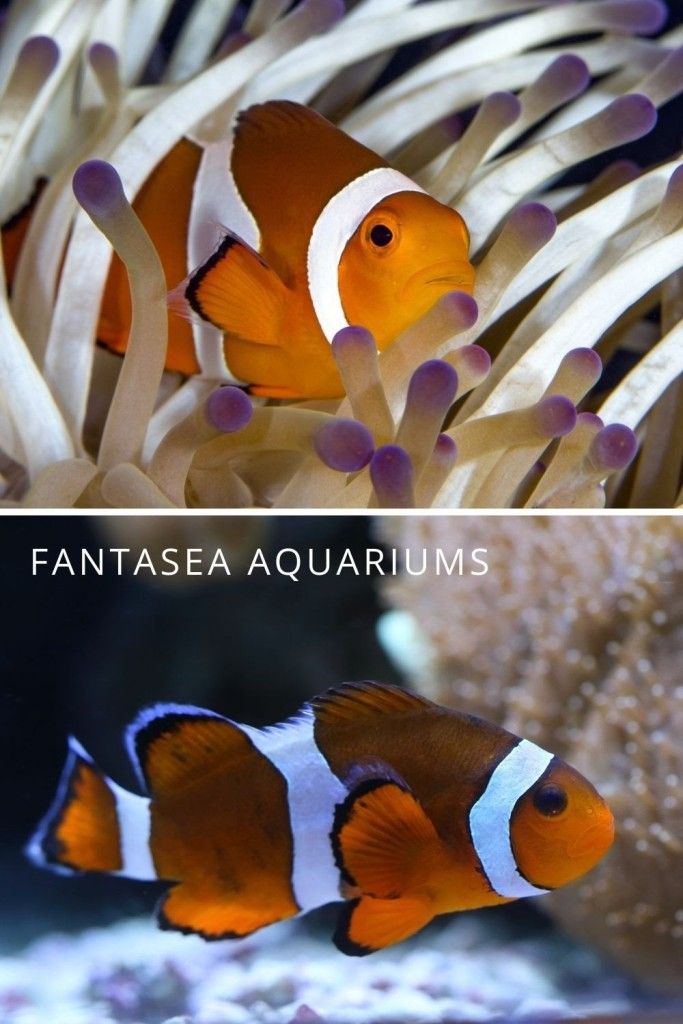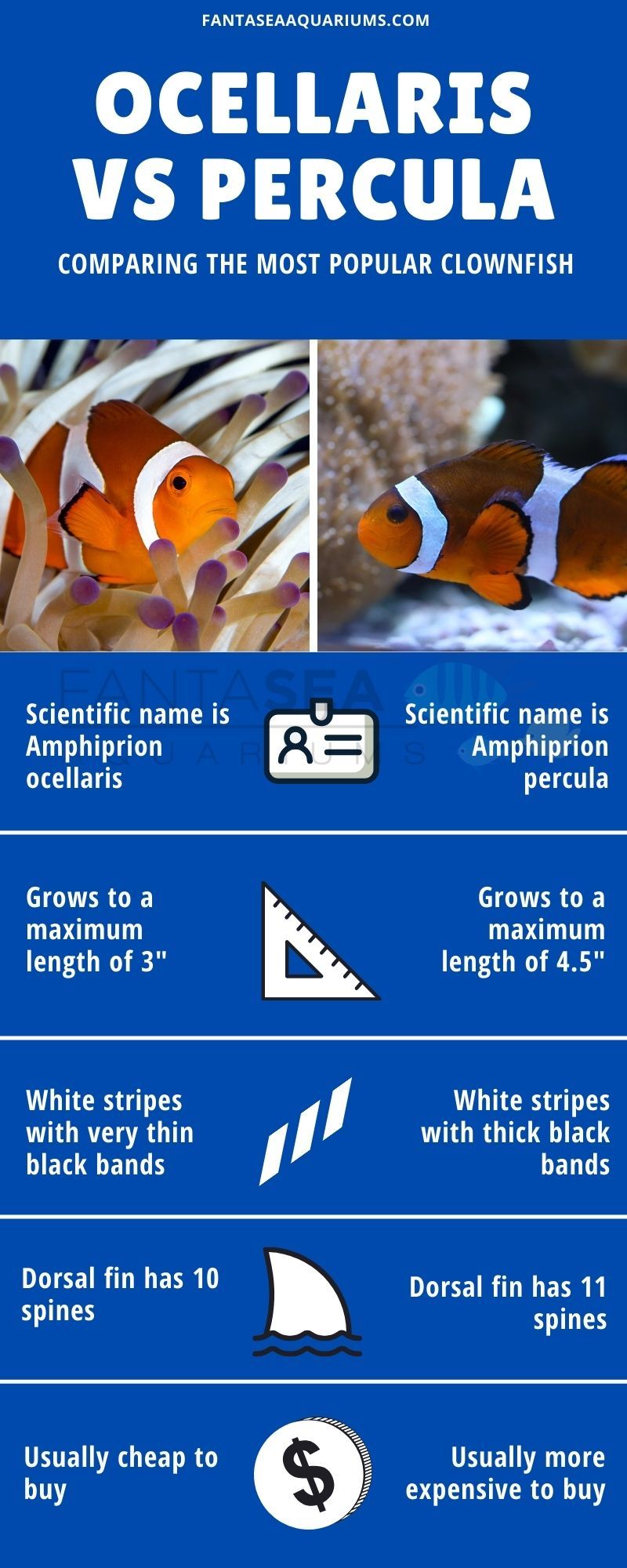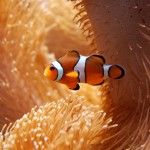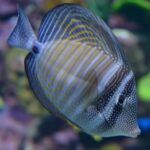As mentioned in our post about clownfish habitat, there isn’t just one type of clownfish out there. In fact, there are actually quite a few different species! The two most popular are probably Amphiprion ocellaris and Amphiprion percula, the ocellaris and percula clownfish. But… how do you know which one you’re dealing with?
Let’s go into ocellaris vs percula to help make figuring out what kind of clown you’re looking at a breeze!
Ocellaris vs Percula: What are the differences?
In many cases, if you’d put an ocellaris and percula clownfish side by side, it would be difficult for the untrained eye to spot the difference at a glance. And yet, they’re not entirely the same!
Ocellaris clownfish are naturally found in the eastern Indian Ocean and western Pacific, basically on both sides of Australia as well as around Japan. Percula clownfish inhabit the waters around northwestern Australia, Japan, and Southeast Asia.
A few of the main differences when it comes to ocellaris vs percula include:
- Pattern. The differences are subtle, but they are there. Both species sport vertical white bands on their body, but the black stripes surrounding these bands tend to be thicker on percula clowns. They may also feature darker coloration around the head area.
- Dorsal spines. The best way to be absolutely sure is to count the spines on the dorsal fin. Ocellaris has 11, percula has only 10!
- Size. This one isn’t very helpful if you don’t know how old a specimen is, but ocellaris clownfish stay a bit smaller at an average of around 3”; perculas can grow to almost 4.5”.
- Price. It seems ocellaris clownfish breed in captivity a lot more easily or more quickly than their percula cousins. The latter can easily be five or more times more expensive in your local aquarium store!
- Temperament. Although your mileage may vary, as each individual is different, percula clownfish tend to be considered the more feisty of the two in terms of aggression and territorial behavior.
Did you know? Exactly because they’re so similar, Amphiprion ocellaris is sometimes referred to as the false percula clownfish, although it’s also called ‘common clownfish’. Amphiprion percula is the ‘true’ percula clownfish.
Ocellaris vs Percula: What are the similarities?
Although many saltwater aquarists do have a favorite (often perculas due to their more pronounced color pattern), these two clownfish species truly are very similar. In fact, they can interbreed, their behavior tends to be almost identical and they go for similar anemone and coral species as hosts. The two are confused all the time.
And by the way – because these guys can interbreed, it is entirely possible to run into hybrids, although it’s not overly common. They are bred together on purpose by some clownfish breeders to aid in the creation of pricey ‘designer clowns’ with special patterns.
Does it matter?
Unless you’re planning on setting up a nano aquarium (in which case the smaller ocellaris clownfish are probably preferable), we don’t really think so.
Ocellaris are said to be a bit hardier than their percula cousins, but the difference isn’t very pronounced. They’re also cheaper in most cases, so if budget is a concern, this does make them more attractive.
Tip: Want to learn more about caring for clownfish in the aquarium? Have a look at our full ocellaris clownfish care guide!

Frequently asked questions
With our newfound knowledge, looking at Nemo’s coloration, we can conclude he’s an ocellaris. The black stripes around the white bars on his body are thinner than they would be on a percula.
If you combine an ocellaris and a percula, they’ll usually pair up and live peacefully. In fact, as we’ve mentioned, they can interbreed.
Conclusion
Telling the difference between these popular clownfish species can be challenging, but it’s definitely possible. Whether it actually matters which type of fish you get is a different question!
Are you dreaming of a beautiful clownfish aquarium in your home or office? We can help! Contact us here with your ideas so we can design, build and maintain your fish tank for you.
Mini quiz answer: The fish in the top image is the ocellaris clownfish. The bottom fish is a percula.





